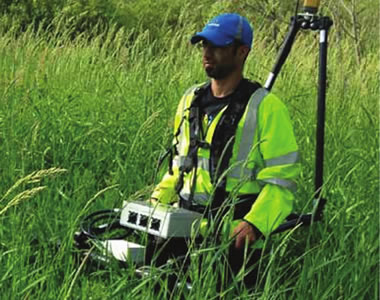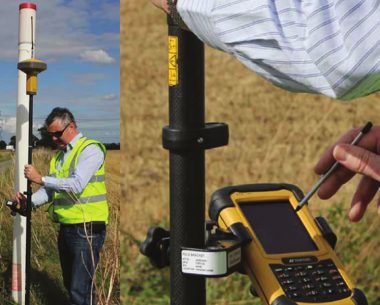
SCT is a non-invasive, non-destructive pipeline inspection survey based on Stress Concentration Tomography technology. It is utilised to report the presence of all defects in any orientation causing stress magnetisation in the pipeline wall, including corrosion, cracks, dents, sagging and twisting. SCT can be used to map the pipeline route to sub metre accuracy, accurately identify the location of casings, pipeline diameter changes and to distinguish between longitudinal weld and seamless construction.
SCT collects the magnetic data of a target pipeline and then analyses it for self-magnetic-flux leakages which are known as Stress Concentration Zones (SCZs). SCT possesses a sophisticated detection algorithm that defines the location of SCZs to sub-metre accuracy. It also reports the estimated stress the SCZs cause on the pipeline wall both in Mpa and as a percentage of the pipeline materials specified minimum yield strength (SMYS). These stress values are then ranked in accordance with the guidelines specified in ASME B31. Using this stress profile information, asset managers can make informed decisions regarding the safe operation of their pipelines, including whether specific areas need repair or replacement. SCT can be used in conjunction with in-line inspection (ILI) for monitoring the development of stress caused by defects within specific sections of a long pipeline as well as other non-invasive methods such as direct current voltage gradient (DCVG) and cumulative induced pressure stress (CIPS) as a solution to confirm if damage to the coating and/or current leakage has led to damage to the pipe wall.
SCT fieldwork and analysis is quick and efficient, with the speed of a field survey determined by a technician’s walking speed and the UNISCAN’s fully automated software. As result, preliminary results can be delivered prior to demobilization and the most dangerous defects identified rapidly.
- Non-invasive, non-destructive inspection technology
- Can be used in conjunction with other non-invasive methods
- Allows for structured approach to evaluate capacity and performance
- Requires no pre inspection or modification to the operating parameters of the pipeline





